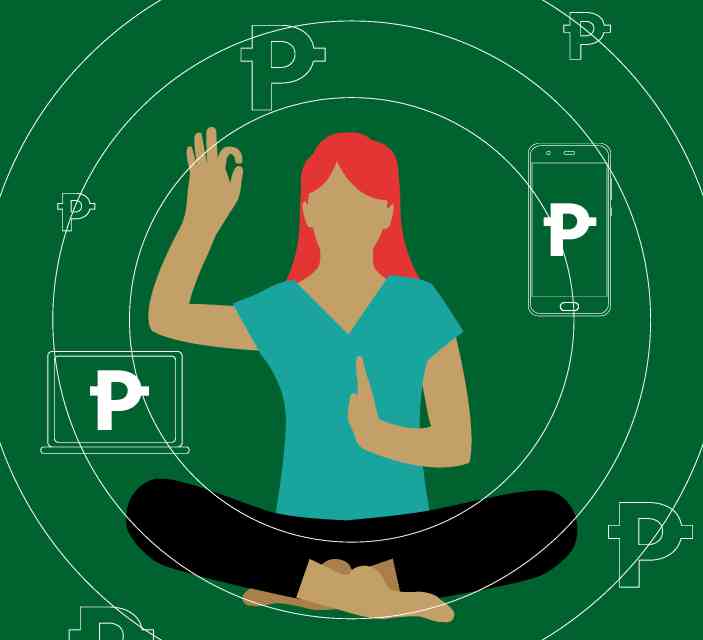Want a stress-free work environment? Ditch the nine-to-five schedule then, and just be your own boss, as a local study has found that self-employed Filipinos see themselves as the least stressed group among the country’s workforce.
According to the second Wellness Index by health maintenance organization PhilhealthCare Inc. (PhilCare), entrepreneurs, generally, have the lowest perceived stress level compared to those working in government, private corporations, small- and medium-sized enterprises (SMEs), and nongovernmental organizations (NGOs).
PhilCare Wellness Index is a nationwide study that measures the perceived health and wellness of Filipinos by looking into their psychological, physical, nutritional, medical, lifestyle and financial well-being. The study also measures sex, stress, vices and health practices of Filipinos.
Initial results of the study were released earlier this year, which reflected that despite having inadequate finances to support their medical needs, many Filipinos believed themselves to be in good health.
A total of 1,350 respondents across the country participated in the study, 460 of whom were employed (74 self-employed, 35 government employees, 88 working in private corporations, 174 in SMEs and 88 in NGOs). They were asked to rate their perceived stress level using a seven-point scale, with one as the highest. The choices, in order, were as follows: very stressed, stressed, somewhat stressed, neither stressed nor not stressed, somewhat not stressed, not stressed and not very stressed.
Aside from the survey, the study’s lead researcher, Dr. Fernando Paragas of the UP College of Mass Communication, said the second PhilCare Wellness Index (the first was in 2014) involved not just a survey, but also included a series of focus group discussions, wherein participants from different sectors delved into problems and solutions relevant to the goal of inclusive health care.
Stress levels
Of the 460 employed respondents, those self-employed appeared to be enjoying their time at work, saying they were “somewhat not stressed,” with an overall score of 4.45.
Employees in private corporations generated the lowest score (3.27), indicating that they were “somewhat stressed” in their workplaces.
Falling in the middle were government, NGO and SME employees, saying they were “neither stressed nor not stressed,” with scores of 4.17, 4.02 and 3.80, respectively.
Focusing on scores based on employed respondents’ ratings for specific stress-related statements, the study showed that four out of 10, or almost 37 percent, said they “somewhat agree” that they feel stressed. Twenty one percent said they neither agree nor disagree.
Private corporation employees, in particular, at 44 percent, registered the highest percentage among those who said they somewhat agree that they feel stressed. This was followed by SME employees (41 percent), government employees (40 percent), NGO employees (28 percent) and those self-employed (26 percent).
Of those who answered that they neither agree nor disagree that they feel stressed, NGO workers led the pack with 27 percent, followed by corporate employees (24 percent), SME employees (20 percent), the self-employed (16 percent) and government employees (14 percent).
Among those who agree, corporate employees took top spot at 19 percent, followed by SME employees (16 percent), government workers (11 percent), self-employed (11 percent) and NGO workers (10 percent).
Quality of sleep
Participants were also asked to rate the quality of their sleep.
Similarly, four out of 10 said they somewhat agree that they sleep restlessly, while almost 23 percent said that they neither agree nor disagree. Fourteen percent agreed with the statement.
Again, corporate employees appeared to have the poorest sleep quality, as they registered the highest percentage (51 percent) among those who somewhat agreed that they experience restless sleep. This was followed by SME employees (41 percent), NGO employees (28 percent), those self-employed (27 percent) and government employees (14 percent).
Among those who answered “neither,” government employees led at 31.43 percent, followed by NGO workers at 25 percent; corporate employees, 24 percent; SME employees, 22 percent; and those self-employed, 16 percent.
Of those who agreed, SME employees led with 15.52 percent, followed by the self-employed (14.86 percent), corporate employees (14.77 percent), NGO workers (13.64 percent) and government employees (8.57 percent).
Another stress-related question posed to participants was, “are you pressed for time?”
The results: 28 percent said that they neither agree nor disagree, 27.5 percent said they somewhat agree, while 15.5 percent said they agree.
Among those who responded “neither,” government employees registered the highest at 37 percent, followed by SME employees (35 percent), corporate employees (26 percent) and NGO employees and those self-employed (both at 19 percent).
As for those who responded that they “somewhat agree,” corporate employees, percentage-wise, led at 33 percent, followed by SME employees (30 percent) and NGO employees (23 percent).
Wellness index
The majority of those who agreed with the statement were corporate employees (25 percent), followed by government employees (23 percent), SME employees (13 percent), NGO workers (7 percent) and those self-employed (7 percent).
The PhilCare Wellness Index, inspired by wellness and health indices in New Zealand (The Sovereign Wellbeing Index of 2015), Canada (The Canadian Index of Wellbeing) and the United States (The State of American Well-Being of 2017), is a tool used by the HMO to develop affordable and responsive medical insurance plans for Filipinos.
PhilCare president and CEO Jaeger Tanco said the results of the study were useful in helping the health sector come up with programs that addressed the needs of Filipinos, which would also help them attain a better state of wellness.
“Our vision is to help promote a brand of health that is holistic and inclusive. The PhilCare Wellness Index gives us a clear picture of where we are when it comes to wellness and, more importantly, it charts a clear path on how far we can go to promote health among Filipinos,” he said.
